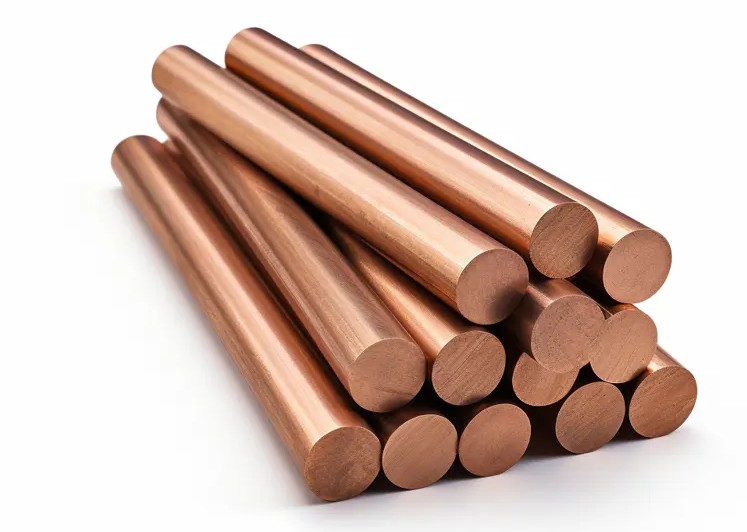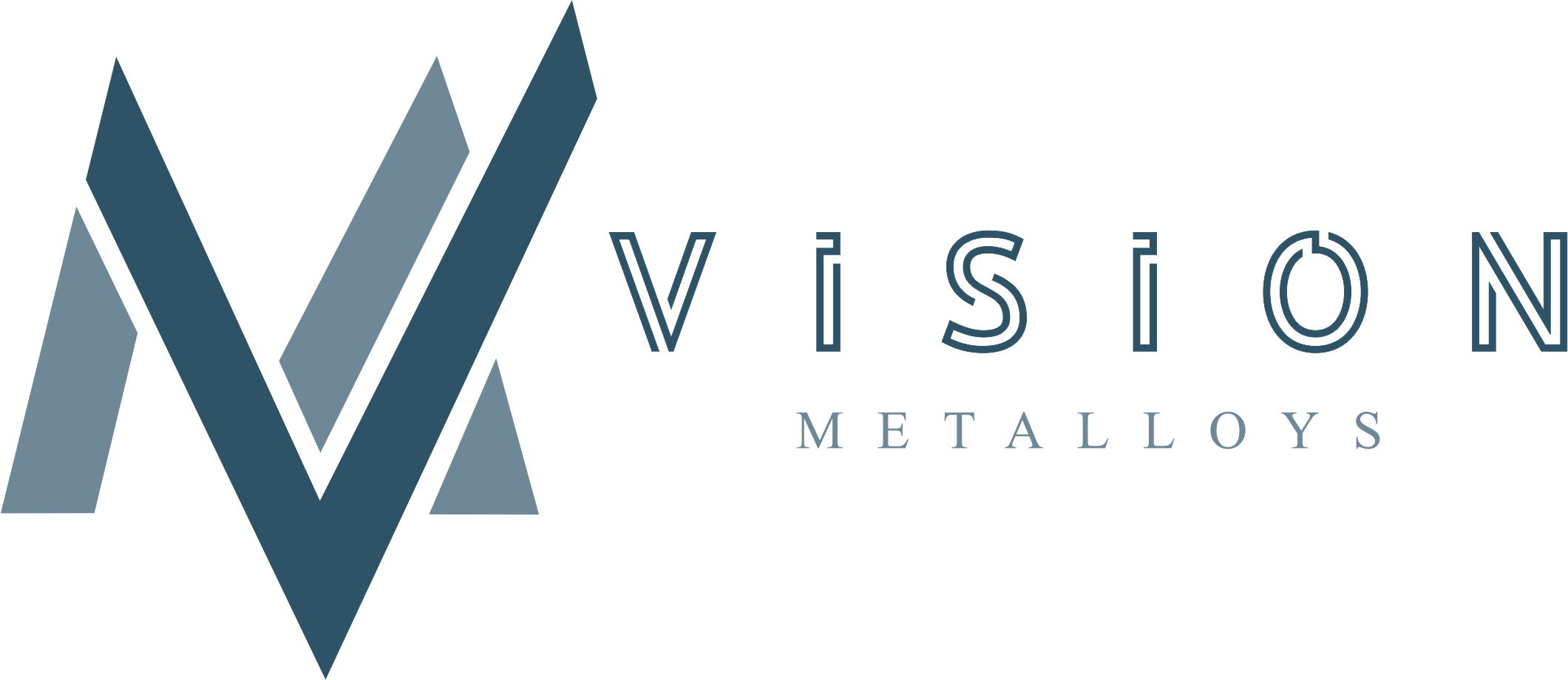
Bronze Grades
Bronze is an alloy primarily composed of copper and tin, although it can also contain small amounts of other elements such as aluminum, manganese, phosphorus, and silicon. Bronze has been used by humans for thousands of years and is one of the earliest materials in history to be used for tools, weapons, and art.
- Composition:
- -Copper (Cu)Copper is the primary component of bronze, giving it good strength, corrosion resistance, and malleability.
- -Tin (Sn)Typically, bronze consists of about 80-90% copper and 10-20% tin. Tin increases the hardness and strength of the alloy, and helps to prevent the formation of corrosion (as compared to pure copper).
- -Other Elements:-
- >> Aluminum: Adding aluminum to bronze creates aluminum bronze, which has high strength and excellent resistance to corrosion, particularly in marine environments.
- >> Phosphorus: Phosphor bronze includes a small amount of phosphorus, increasing strength and wear resistance.
- >> Manganese: In manganese bronze, manganese is added to improve strength and corrosion resistance, particularly in industrial applications.
Table of Content
ASTM B505 Grade C93200
**C93200**, also known as **Leaded Tin Bronze**, is a copper-based alloy primarily composed of copper, tin, and lead. It is one of the most commonly used alloys for bearings, bushings, and other high-wear applications due to its excellent wear resistance, low friction properties, and ability to self-lubricate. ASTM B505 Grade C93200 is manufactured according to the ASTM B505 standard, which specifies the requirements for bronze alloys suitable for bearings and other heavy-duty applications.
Key Properties
| Property | Value |
|---|---|
| Chemical Composition | Cu (88%), Sn (8.5%), Pb (3.5%) |
| Density | 8.73 g/cm³ |
| Electrical Conductivity | 12% IACS (International Annealed Copper Standard) |
| Melting Point | 900-1000°C (1652-1832°F) |
| Tensile Strength | 220-370 MPa |
| Hardness | 70-120 HB (depending on temper) |
Standards for C93200
ASTM B505 Grade C93200 is manufactured according to the **ASTM B505** standard, which specifies the requirements for copper-based alloys suitable for heavy-duty applications. Some of the key standards related to C93200 include:
| Standard | Specification |
|---|---|
| ASTM B505 | Standard Specification for Copper Alloy Castings for Bearing and Other Applications |
| ASTM B271 | Standard Specification for Copper and Copper-Alloy Forgings |
| UNS C93200 | Unified Numbering System (UNS) for C93200 (Leaded Tin Bronze) |
Applications
ASTM B505 Grade C93200 is primarily used in applications where high wear resistance, durability, and low friction are critical. Some key applications include:
- **Bearings**: C93200 is commonly used in the manufacturing of plain bearings, journal bearings, and thrust bearings due to its self-lubricating properties and excellent wear resistance.
- **Bushings**: Often used in automotive, industrial, and marine applications, where bushings are exposed to high loads and require long-lasting performance.
- **Sleeves and Rings**: C93200 is used in the production of sleeves, rings, and other components in machinery where durability is essential.
- **Piston Rings**: Used in some piston ring applications for engines, especially where high load-bearing capacity is needed.
- **Marine Components**: Due to its resistance to corrosion in seawater and other harsh environments, C93200 is commonly used in marine hardware and equipment.
Advantages of C93200
- **Excellent Wear Resistance**: The addition of lead and tin provides C93200 with outstanding resistance to wear and tear under heavy loads.
- **Low Friction**: This alloy has low friction properties, making it ideal for applications such as bearings and bushings, where smooth movement is required.
- **Good Corrosion Resistance**: The alloy is resistant to corrosion in various environments, including marine and industrial settings, making it durable in harsh conditions.
- **Self-Lubricating**: The lead content in C93200 helps to form a self-lubricating film, reducing the need for external lubricants in some applications.
- **Good Strength**: It offers moderate tensile strength and hardness, making it suitable for heavy-duty applications.
ASTM B505 Grade C93200, or Leaded Tin Bronze, is a highly durable alloy widely used in bearings, bushings, and other applications requiring low friction, excellent wear resistance, and corrosion resistance. Its ability to self-lubricate due to its lead content makes it an ideal material for machinery that requires minimal maintenance. While it may have limitations related to its lead content and lower electrical conductivity, C93200 remains an excellent choice for many industrial and mechanical applications.
Aluminium Bronze Grade 1
Cual10Fe3Mn3 (Aluminium Bronze Grade 1) is a copper-based alloy that contains significant amounts of aluminum, iron, and manganese. This alloy is known for its high strength, excellent corrosion resistance, and wear resistance, particularly in aggressive environments like marine, chemical, and industrial applications.
The addition of aluminum provides the alloy with superior corrosion resistance, especially in seawater, while iron and manganese improve the material’s mechanical properties and wear resistance, making it suitable for heavy-duty applications.
Composition
- Copper (Cu): 85-88%
- Aluminum (Al): 9-11%
- Iron (Fe): 2-3%
- Manganese (Mn): Small amount for enhanced strength and wear resistance
Key Properties
- Corrosion Resistance: Excellent resistance to seawater and other aggressive environments.
- High Strength: Offers high mechanical strength, making it suitable for structural components.
- Wear Resistance: Strong resistance to wear, which is important for applications with high friction.
- Good Weldability: Despite its high strength, it maintains good weldability and machinability.
Common Applications
- Marine Components: Used in propellers, rudders, and other submerged parts due to its resistance to corrosion in seawater.
- Aerospace Components: Used in pumps, valves, and other high-performance parts in the aerospace industry.
- Industrial Machinery: Ideal for bearings, gears, and other machinery parts requiring wear resistance and strength.
- Chemical Processing: Used in equipment exposed to harsh chemicals and environments.
Aluminium Bronze Grade 2
Cual10Fe5Ni5 (Aluminium Bronze Grade 2) is a high-performance copper-based alloy, primarily composed of copper, aluminum, iron, and nickel. This alloy is known for its exceptional corrosion resistance, high mechanical strength, and wear resistance, especially in marine and industrial applications. The addition of nickel enhances its resistance to corrosion in harsh environments, including seawater and chemical exposure.
Composition
- Copper (Cu): 80-85%
- Aluminum (Al): 9-11%
- Iron (Fe): 4-6%
- Nickel (Ni): 4-6%
- Other elements: Small amounts of manganese, silicon, and other elements for optimization.
Key Properties
- Corrosion Resistance: Excellent resistance to seawater, brine, and harsh chemicals.
- High Strength: Offers superior mechanical strength, ideal for structural components and heavy-duty applications.
- Wear Resistance: Excellent resistance to wear, making it suitable for high-friction environments.
- Weldability: Maintains good weldability, allowing for easy processing.
- Heat Resistance: Performs well in moderate to high-temperature applications.
Common Applications
- Marine Industry: Used in propellers, rudders, shafts, and other submerged parts.
- Aerospace Industry: Suitable for high-performance components such as pumps and valves.
- Industrial Machinery: Bearings, bushings, and components exposed to wear.
- Chemical Processing: Used in reactors, heat exchangers, and other equipment exposed to harsh chemicals.
Phosphorus Bronze Grade 1
Phosphorus Bronze Grade 1 is a copper-based alloy with a small percentage of phosphorus. Known for its excellent wear resistance, corrosion resistance, and high strength, this alloy is ideal for applications that require durability and strength in harsh environments. The addition of phosphorus improves lubrication properties and enhances the overall toughness of the alloy.
Composition
- Copper (Cu): 90-95%
- Phosphorus (P): 0.01% - 0.35%
- Other elements: Small amounts of tin, lead, or other elements depending on the specific variant.
Key Properties
- Wear Resistance: Excellent resistance to wear, especially in high-stress environments.
- Corrosion Resistance: Good resistance to corrosion, particularly in marine and industrial applications.
- High Strength and Toughness: Provides durability in harsh mechanical conditions.
- Elasticity: Absorbs shocks and vibrations, reducing mechanical failure.
- Fatigue Resistance: Resistant to fatigue under repetitive loading.
- Electrical Conductivity: Moderate conductivity, making it suitable for some electrical applications.
Common Applications
- Electrical Contacts: Used in electrical connectors and terminals for their conductivity and durability.
- Springs and Bushings: Common in components that require both wear resistance and elasticity.
- Bearings and Gears: Ideal for machinery components that experience high levels of friction.
- Marine Applications: Suitable for underwater and marine components due to corrosion resistance.
- Musical Instruments: Used for strings in musical instruments due to its resonance and durability.
Phosphorus Bronze Grade 2
Phosphorus Bronze Grade 2 is a copper-based alloy containing phosphorus, which enhances its wear resistance, corrosion resistance, and overall strength. This alloy is highly suitable for applications requiring durability, resistance to friction, and the ability to withstand cyclic loading. It is widely used in industries such as manufacturing, marine, and electrical components.
Composition
- Copper (Cu): 90-94%
- Phosphorus (P): 0.2% - 0.35%
- Other elements: Small amounts of tin, lead, or other elements depending on the specific alloy variant.
Key Properties
- Wear Resistance: Excellent ability to resist wear, ideal for components with high friction.
- Corrosion Resistance: Good resistance to corrosion, especially in seawater and atmospheric conditions.
- High Strength and Toughness: Offers high mechanical strength for heavy-duty applications.
- Fatigue Resistance: Resistant to fatigue under repetitive or cyclic loading.
- Elasticity: Absorbs shocks and vibrations, reducing mechanical failure.
- Electrical Conductivity: Suitable for electrical components requiring moderate conductivity and durability.








